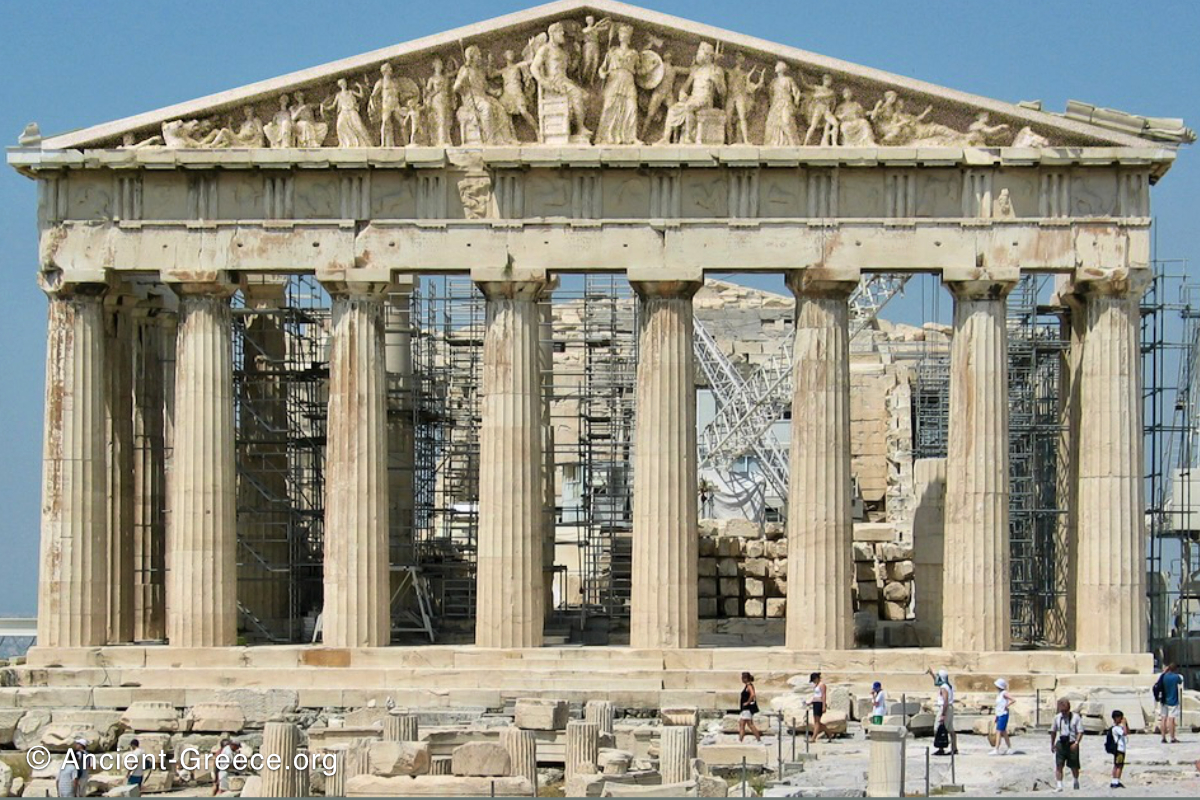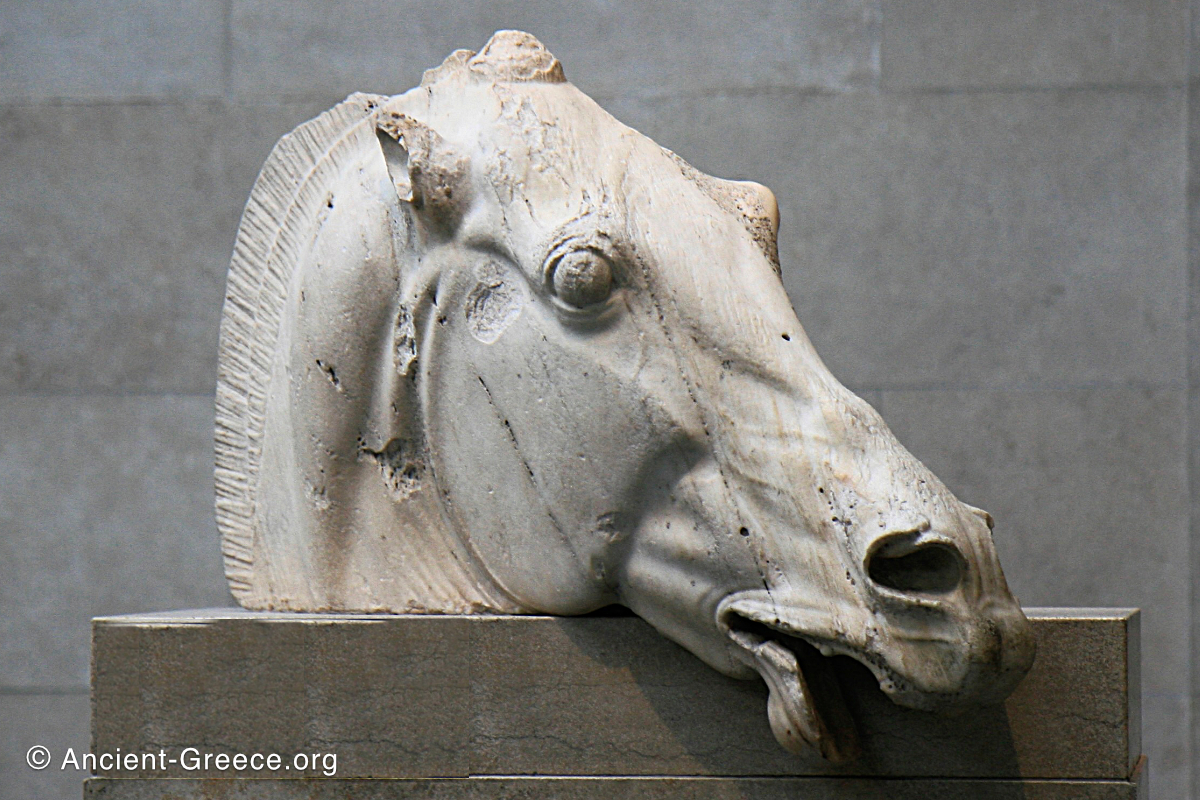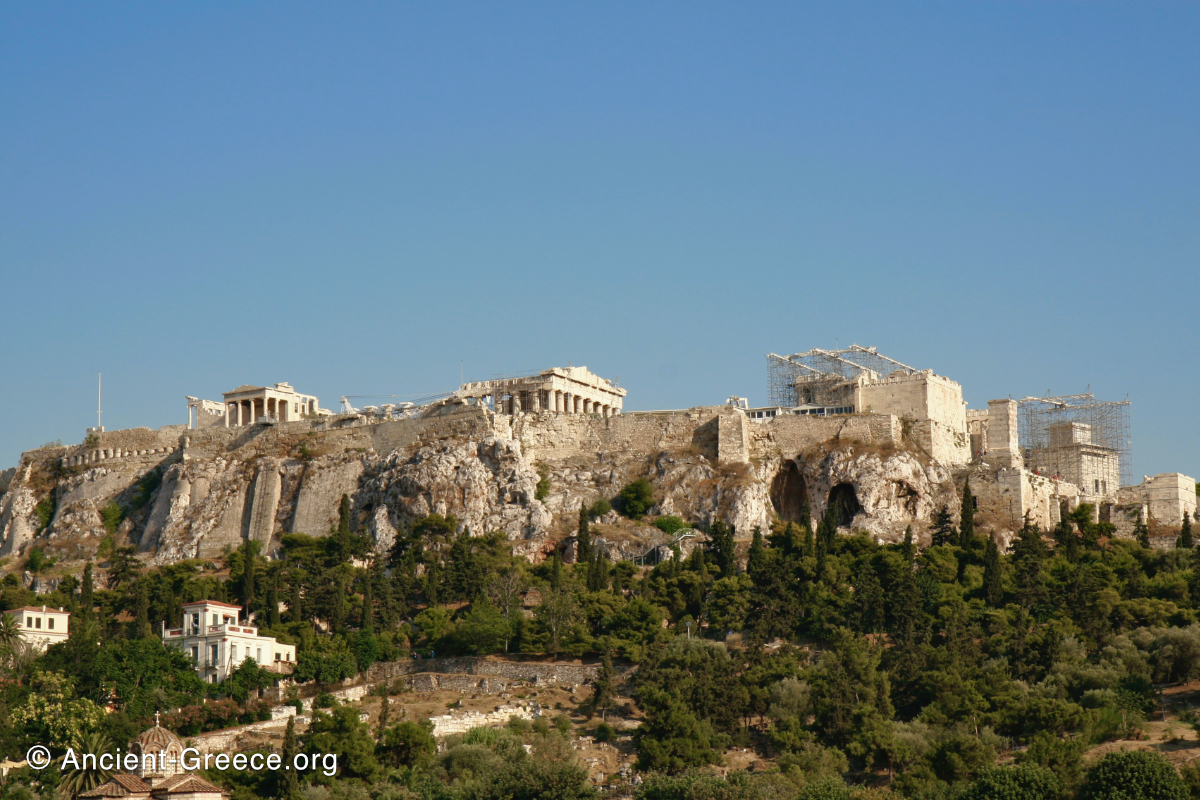
On this page:
The Parthenon pediments were lavishly adorned with sculptures that filled their triangular shapes in both the east and west facades.
The sculptures of the Parthenon pediments are some of the finest examples of classical Greek art.
Both sculptural themes involve the goddess Athena to whom the temple was dedicated.
In the east pediment the goddess is depicted in the moment of her birth, while in the west pediment, she is competing with Poseidon for becoming the city’s patron.
In ancient times the sculptures were colored, as was the entire Parthenon–though how vivid the colors looked, or how much of the temple was painted is not certain.
Parthenon East Pediment
The east pediment represented the birth of Athena.
According to Greek mythology Zeus gave birth to Athena after a terrible headache prompted him to summon Hephaestus’ (the god of fire and the forge) assistance. To alleviate the pain he ordered Hephaestus to strike him with his forging hummer, and when he did, Zeus’ head split open and out popped the goddess Athena in full armor. The sculptural arrangement depicts the moment of Athena’s birth.
Unfortunately, the center pieces of the pediment were destroyed before Jacques Carrey created his drawings in 1674, so all reconstructions are subject to conjecture and speculation. The main Olympian gods must have stood around Zeus and Athena watching the wondrous event with Hephaestus and Hera probably near them. The Carrey drawings are instrumental in reconstructing the sculptural arrangement beyond the center figures to the north and south.
The birth of Athena took place at dawn, and this precise chronology is depicted by the heads of the horses that appear at the south corner of the pediment.
The horses of Helios (sun) are depicted as if they are about to rise above the horizon pulling behind them the life giving sun. The horse’s faces are depicted in vigorous activity and full of energy, in contrast to the group of horses at the other end (the north) that appear fatigued and labored with bulging eyes, open mouths, and tense muscles as they dip below the horizon. The horses of Selene (moon) are tired for they are at the end of their journey across the night sky.
The poses of the statues are mostly relaxed and exhibit moderate interaction with each other, while the lines of the drapery of the clothes provide most of the visual drama as they are carved in deep relief that provides high contrast between light and shadow.
The figures at the center exhibit moderate movement, while the ones at the corners are reclined to accommodate the limited space, and to accurately depict the activity level during the early hours of the morning when most gods and mortals alike await the for the sun to rise.
Parthenon West Pediment
The west pediment faced the Propylaia and depicted Athena and Poseidon competing for the honor of becoming the city’s patron.
Athena and Poseidon appear at the center of the composition, diverging from one another in strong diagonal forms with the goddess holding the olive tree and the god of the sea raising his trident to strike the earth. At their flanks they are framed by two active groups of horses pulling chariots, while a crowd of legendary personalities from Athenian mythology fills the space out to the acute corners of the pediment.
The figures are sculpted in natural movement with bodies full of vital energy that bursts through their flesh, as the flesh in turn bursts through their thin clothing. The thin chitons allow the body underneath to be revealed as the focus of the composition. The distinction between gods and humans is blurred in the conceptual interplay between the idealism and naturalism bestowed on the stone by the sculptors.
The sculptures were finished all around even though parts of them were placed against the back wall of the pediment never to be seen. Finishing the figures even in areas unseen was a necessary task in order to ensure the high degree of realism that the artists were aiming at. It would be extremely difficult to sculpt the front without the accurate reference of the back. It is also possible that the statues were exhibited freestanding before they were hoisted 16 meters above ground and placed at the pediment.
The overall character of the pediment sculptures was very energetic as the figures were placed in a dense arrangement with many overlapping bodies and limbs. As a result, the negative space between the figures acquired a complexity analogous to the one found on the statues themselves, while glimpses of the flat background, which would allow the eyes to rest, were minimized. The space beyond the building was pulled into the pediment composition cleverly as the figures often reached out beyond the imaginary plane of the temple’s façade.













































